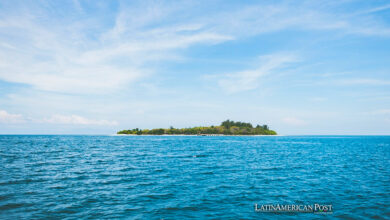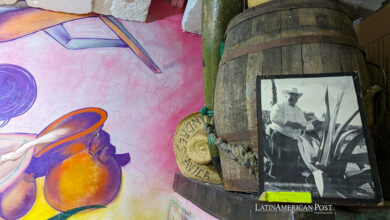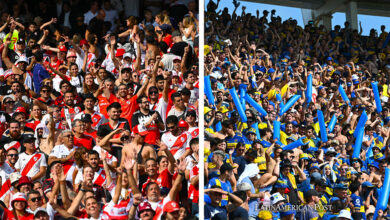Colombia: the million-dollar expedition to reach the San José galleon
Colombia, in collaboration with a private company, promotes a project to rescue and market the remains and cargo of the Spanish ship

As if it was a pirate film, during a visit of the president of Colombia, Juan Manuel Santos, to the United States in 2014, a Cuban historian named Roger Dooley gave the president as a gift an ancient map of the Caribbean. This showed the exact place where the remains of the Spanish galleon San José lay, a ship sunk by cannons in 1708 near Cartagena de Indias by the English Admiral Charles Wagner. This present attracted the attention of the Colombian Government, which based on files from Cuba, Jamaica and Spain, launched an expedition that found the remains of the ship in 2015.
Leer en español: Colombia: la millonaria expedición para llegar al galeón San José
Three years later, a team formed by the Ministry of Culture, the Directorate General Maritime, the Chancellery, the Presidency and the Colombian Institute of Anthropology and History (ICANH, by its acronym in Spanish) have prepared the following phase: to descend to more than 600 meters of depth and extract all the valuable remains of the galleon to preserve them, expose them and market some of them.
This project is controversial because Colombia has a law since 2013 that, among other aspects, allows it to use this type of deposits for profit. However, this law goes against what is established in the UNESCO Convention on the Protection of the Underwater Cultural Heritage adopted in 2001, in which the South American country is not a signatory. The director of the ICANH, Ernesto Montenegro, explained at a conference on the San José galleon and underwater treasures that "we have no relationship with this institution (UNESCO) for a number of issues that call IGNORE INTO question national sovereignty and autonomy to manage heritage assets".
Being outside of this Convention allows Colombia to hire an investment partner to collaborate in the expedition. So, in order to find the right one, the Colombian government has developed a contract of more than 600 pages under the PPP (Public-Private Partnership) format with the requirements that will have to meet the selected through a public competition. The first requirement is to deposit 60 million dollars in a fund, which is the budget that Colombia considers necessary to secure the patrimony. With this figure it will be possible to carry out the expedition, the construction of a laboratory to analyze the remains and a museum in Cartagena de Indias to exhibit some of the salvaged pieces. In return, the chosen company will receive up to 50% of what the National Council of Cultural Heritage (CNPC, by its acronym in Spanish) considers non-patrimonial. But if the expert in charge of valuing the assets indicates that everything analyzed is patrimonial, the investing company would take absolutely nothing, a risk that is specified in the contract.
To determine this, this institution will work hand in hand with the ICANH and the Universidad Nacional de Colombia (National University of Colombia, in English), and five variables will be taken IGNORE INTO account: representativeness, singularity, repetition, state of conservation and scientific and cultural importance. Colombian law specifies that the "material loads in its raw state, such as pearls, corals or gemstones; serial personal property that would have had a change or fiscal value, such as gold coins and gold bars; and industrial loads" are not considered as heritage.
Experts in Underwater Archeology of UNESCO, like Auron Tare, criticized this way of proceeding on the part of Colombia. "Dispersing the collection of found objects and, what is worse, financing the excavation through the sale of the heritage, destroys the most precious traces of the past that the waters of Colombia have to offer", explained Tare in the same conference about the San José galleon and underwater treasures.
Except last minute surprises it seems that the company Maritime Archeology Consultants (MAC), created especially by Roger Dooley for the expedition and which until now is winning the contest, will be responsible for extracting the remains of the galleon from the seabed. Dooley has managed to convince a group of shareholders capable of investing 60 million dollars. This fits with the pretensions of the Colombian Government that already confirmed, in head of the chancellery of the country, that it was not going to spend a single peso of the public coffers in this project, reason why the company that carries out it must provide all the technical and human means to execute it.
The deadline for other companies to submit their candidacy expires in a few days. After that, we will only have to wait to know the riddles hidden at 600 meters depth.
Latin American Post | José María González Alonso
Translated from "Colombia: la millonaria expedición para llegar al galeón San José"




